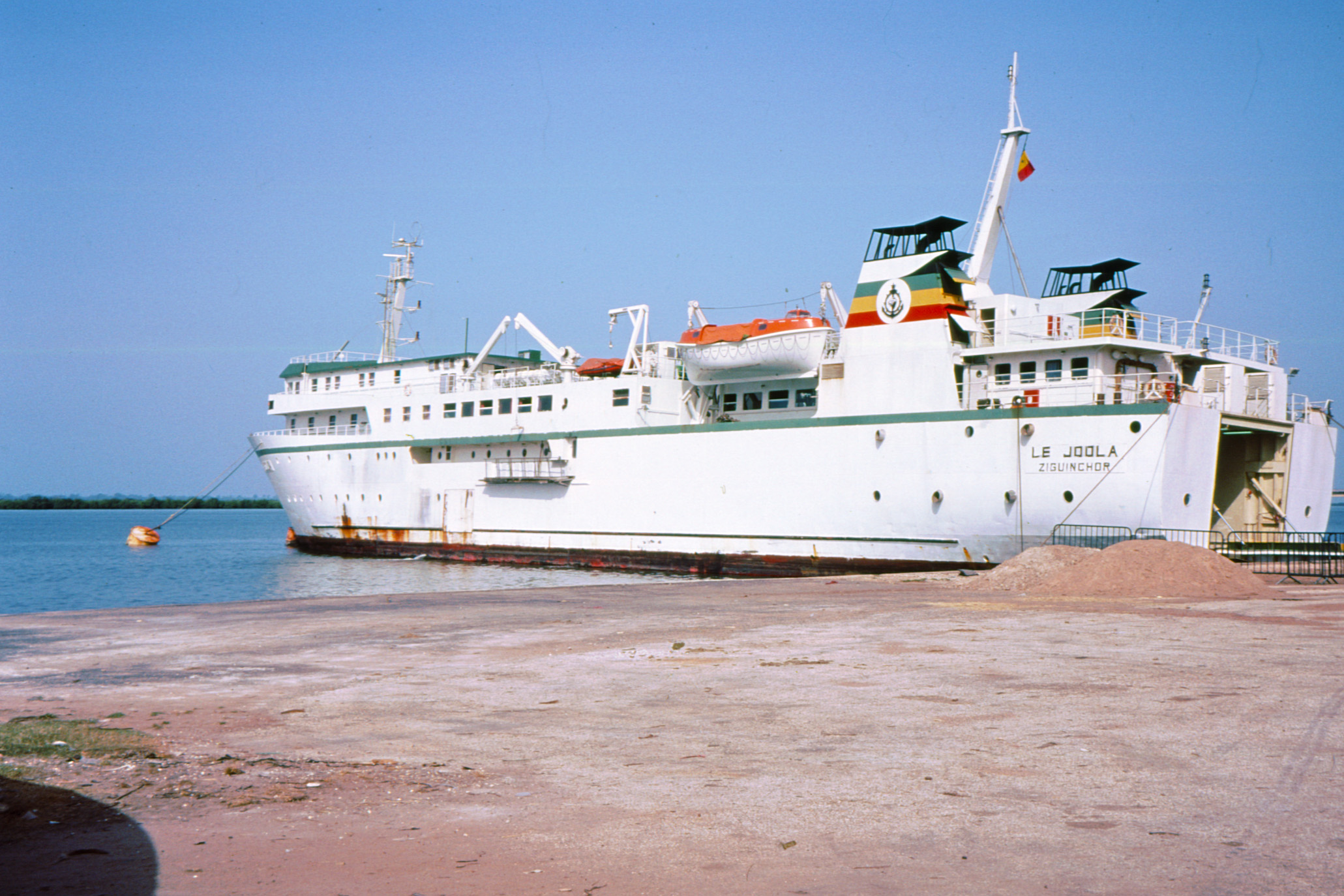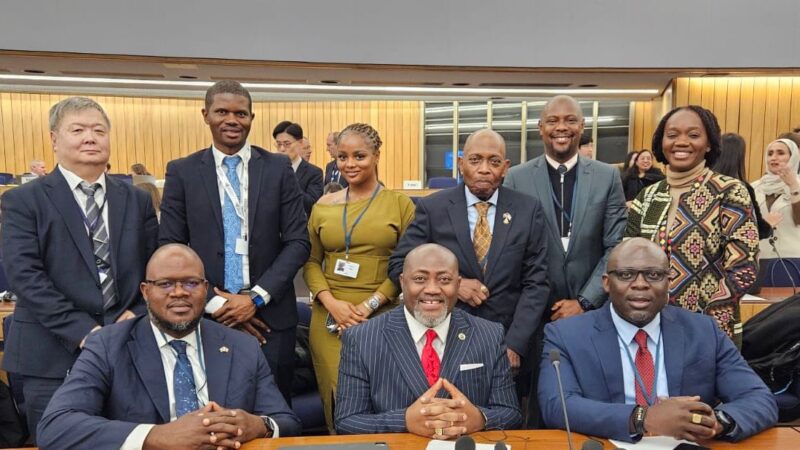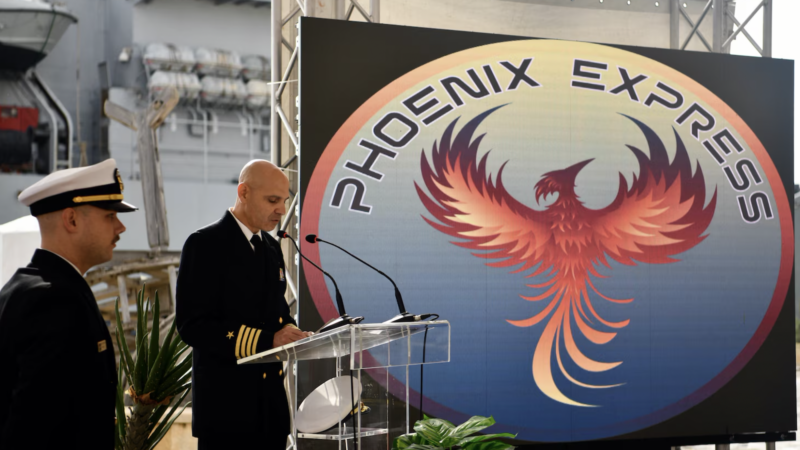The ship M/S “JOOLA”, 20 years and nearly 2,000 dead and after

Since the dawn of time, the sea has been a privileged space for men and the development of civilizations. To feed themselves, to trade, to travel. Long before cars, trains and planes, boats were the only way to trade and open up to the world. For the best and for the worst.
The hazard that determines maritime navigation through the big adventure is the one that will hold all our attention as a sea event. In spite of the precautions taken in terms of maritime safety, a disaster, a peril can always occur. The sea, or Mother Nature, just like the divine will, escapes the hand of man.
To this, it would also be good to add “man-made”. The latter is characterized – according to the dictionary of legal terms – by “a human will” whose consequences “are not desired by their author but which supposes, at a given moment, the action of an individual” that can lead to the realization of an offence or a crime.
It is this somewhat fatalistic and irresponsible human behavior that characterizes the majority of marine accidents. Like the one we have to evoke in this sad anniversary of the sinking of the Joola.
The story of a terrible and deadly sinking of a ferry planned for a maximum capacity of 536 passengers according to the newspaper “Le Point”. The ferry was taking the sea route from Ziguinchor to its other port of call, Dakar, the Senegalese capital, via Gambian territorial waters.
Due to the political situation in this southern part of Senegal, the commercial operation of this means of transport had been entrusted to the military for security reasons but also for reasons of discipline that this corps has always shown. By taking such a decision, the decision-makers had undoubtedly ignored the behavior that characterizes a part of our fellow homosenegalensis, irresponsibility added to the fact of always relying on the divine will.
On that fateful Thursday, September 26, 2002, the whole country woke up in a stupor. The M/S Joola had sunk. Submerged by waves, but first of all by this human irresponsibility. The boat that left on that day of September 26 will never again see the light of dawn in Dakar, taking with it entire families, teachers, students, tourists, and merchants on a last journey of no return.
Prior to this unprecedented sinking, it appears from the report of the commission of inquiry into the causes of the sinking “JOOLA”, that the ship, following the refit it had undergone between November 2000 and June 2001 “following a request for reclassification, the office veritas which had monitored the work in dry dock in accordance with its mandate …” had issued at the time that “a certification of provisional class to the boat …”. However, it would be necessary to specify at the outset that the certificate in question in this case was “valid only for the period from 25 July 2001 to 31 December 2001 with various reservations”.
Furthermore, and to use a language dear to the maritime world, a first “may day” had been rumored in the press. Indeed, on May 26, 2001, four months before the tragedy, rumors were already circulating that the Joola had disappeared.
In fact, “Le Joola”, designed for 536 passengers (excluding crew), was sailing that night with almost four times that number on board, i.e. 2,000 passengers. Some even speak of a larger number. Not to mention the merchandise on board as well as some vehicles.
After the “Doña Paz” of the Philippine, and its 4386 missing in 1987, and much more than the famous “Titanic” in 1912 sunk after a collision with an iceberg, the sinking of the “Joola” is the second biggest disaster that the world has ever known in the field of maritime passenger transport.
A boat that should never have taken to the sea if we trust the first reactions of the President of the Republic at the time. He said of the “Joola” that this “boat is a boat for rivers, lakes and rivers and not for the open sea. Later, it was revealed that the boat had taken on water without a functional draft, with non-operational ballast tanks and with only one engine instead of two.
There was a French rescue team, but as the saying goes, it was “doctor after death”. But it was too late. The alert had only been given sixteen hours after the sinking.
Now that the facts have been presented, 20 years later, one question arises: why did the trial not take place, why was it classified as a case without follow-up?
What is the responsibility of the captain, the guardian of the ship, who sank just like his ship, or who should also sink just like the ship in question?
Are we entitled to close the file with the sole purpose or fact that the responsibility of the captain carries the responsibility of an entire institution?
Since in law, the confession is the temptation of the guilty, is the responsibility of the Senegalese State not to be engaged in all its dimension, in particular with regard to the statements made by its President at the time?
Did the ship in question have an insurance policy? If so, which insurer was involved?
Why was there not a system of compensation on its part instead of the lump sum paid by the State?
By Mr. DIABY Mahamadou,
Lawyer, Master of Law and Security of maritime and oceanic activities – University of Nantes and Centre Trainmar de Dakar
E-mail: mouhammeddiaby@icloud.com / mouhammeddiaby@hotmail.fr




